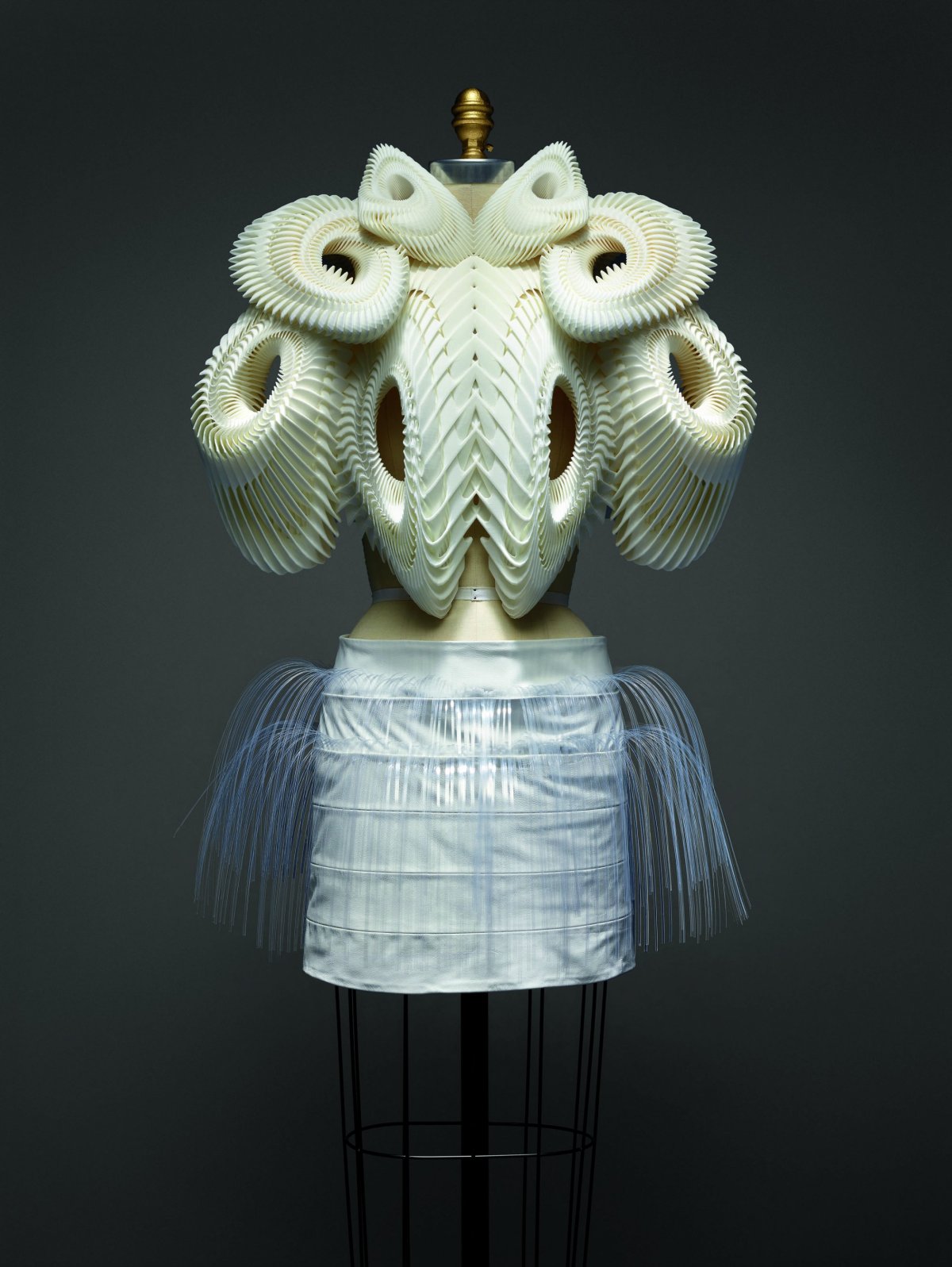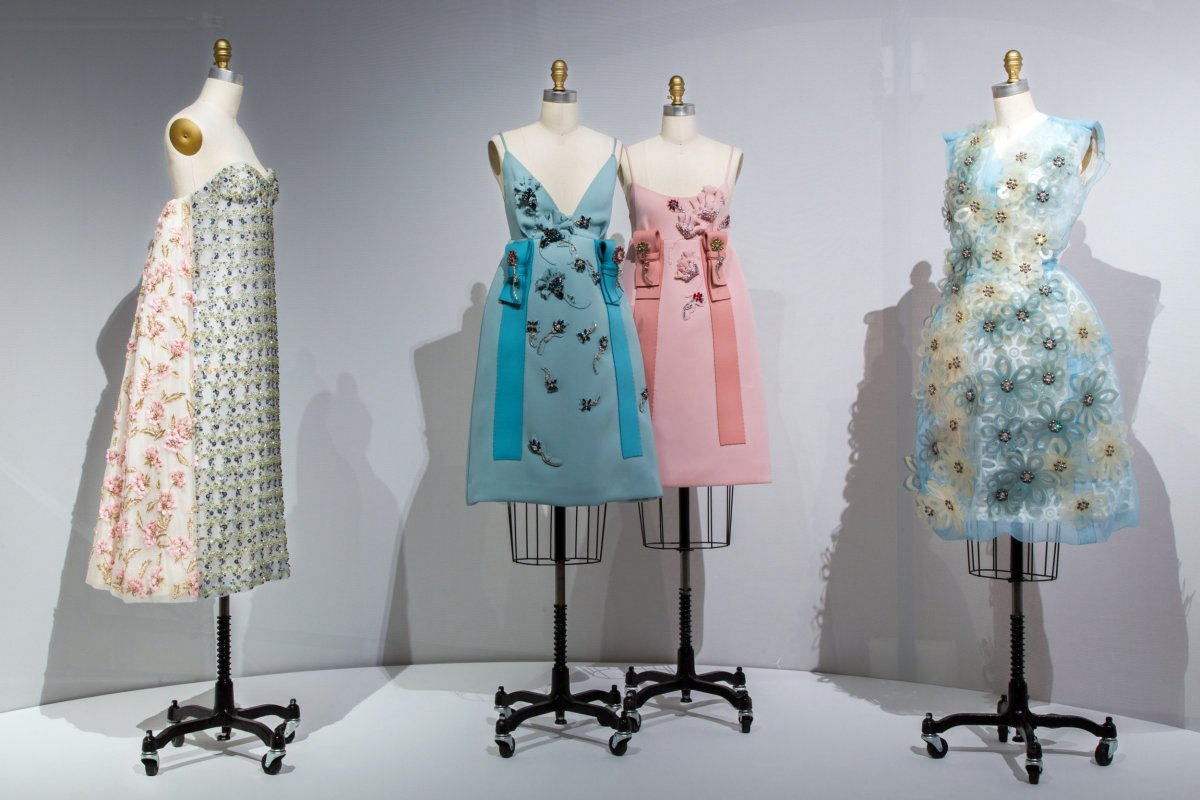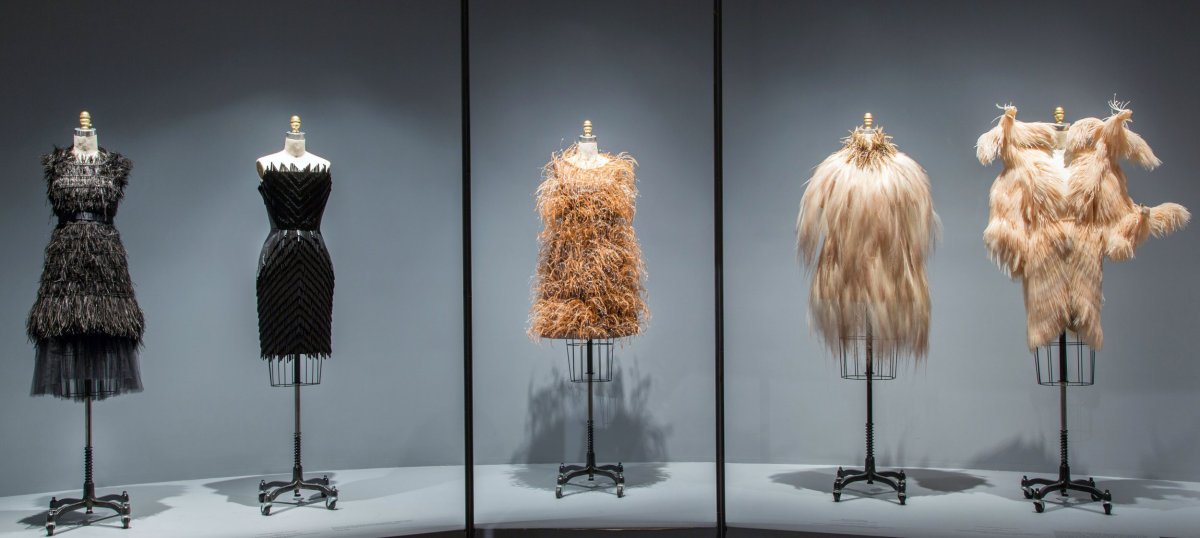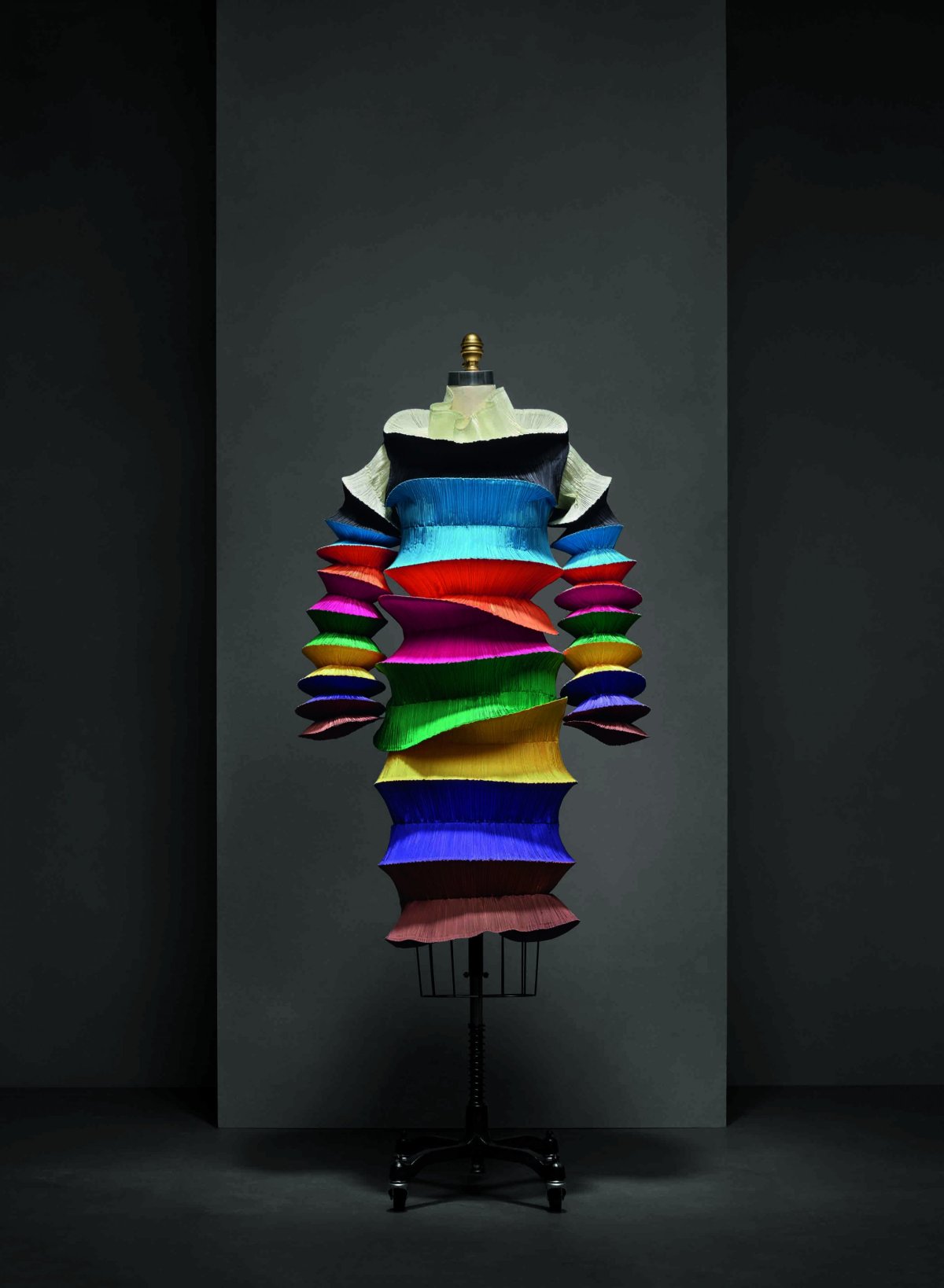
It stands on a dais in the center of a circular room, sparkling and mesmerizing from its exalted perch. Karl Lagerfeld's haute couture wedding ensemble is worthy of worship in the context of Manus x Machina: Fashion in an Age of Technology, a new exhibition from the Metropolitan Museum of Art's Costume Institute in Manhattan. The elaborate train spilling down the back of the dress leads the eye upward, where close-up views of its intricate golden detail are projected onto a domed ceiling. A serene score by Brian Eno fills the air, as though decelerating time. The feeling, not by accident, is that of a cathedral.

The exhibition, which opened to the public Thursday, "has been meticulously designed…to stand as a temple to the beauty and artistry of fashion," curator Andrew Bolton said at a press preview. Manus x Machina, meaning "hand and machine," is an ode to the making of fashion, one that aims to "demystify some of the processes" behind it. The handmade and machine-made, as well as haute couture and prêt-à-porter (or ready-to-wear), come loaded with associations and can seem to be at odds, but the show attempts to explore these methods of creation and categories without bias, as they blur together and function in service of a common goal. Manus x Machina, Bolton says, "suggests a spectrum of practice whereby the hand and the machine are equal protagonists in solving design problems, enhancing design practices, and ultimately advancing the future of fashion."
Lagerfeld's creation, for the House of Chanel autumn-winter 2014–2015 collection, served as an inspiration and a case study around which the exhibit is built. The design of the train on this "superlative example of [the] confluence between the handmade and the machine made," Bolton explained, was sketched by hand, manipulated on a computer, painted by hand, machine-printed with rhinestones and hand embroidered with pearls and gemstones.

The ensemble, an introductory statement at the center of the gallery, is "a wonderful example of artisan-like craft executed with the deepest consideration, yet enabled with the very latest technology," said Jonathan Ive, chief design officer for Apple, the exhibit's sponsor. Manus x Machina also received support from Condé Nast, whose artistic director, Vogue editor-in-chief Anna Wintour, co-chaired the annual Costume Institute Benefit Monday night as she has for nearly two decades. This year, her co-chairs included Ive, Taylor Swift and Idris Elba.
Around the perimeter of the exhibit's central chamber, eight copies of Denis Diderot and Jean le Rond d'Alembert's Encyclopedia, or Systematic Dictionary of the Sciences, Arts, and Crafts are opened to various pages at a 90-degree angle "almost as if a bird is about to take off in flight," Bolton tells Newsweek. "Diderot's encyclopedia is the first time really that fashion was presented as an art form," he says. The 18th-century volume is both an early articulation of the show's theme—highlighting the "creativity, dexterity and complexity involved in the making of fashion"—and its organizing principle. The hallway and rooms surrounding the inner dome, as well as others arranged in a circle downstairs, are divided based on the métiers, or trades, described by Diderot in the encyclopedia, including embroidery, featherwork and artificial flowers on the main level and pleating, lacework and leatherwork downstairs.

Every time the Met opens a Costume Institute exhibit, as it did with last spring's China: Through the Looking Glass, it creates an entirely new world within its walls. In this case, the structure housing the displays, designed by OMA New York, is "a building within a building," as Met Director and CEO Thomas P. Campbell described it, "with scrim-covered domes and niches."
The gauzy scrims reveal the makings of the structure, just as the exhibit reveals the makings of fashion. "There's a nice sort of synergy between the overarching theme of the exhibition and the construction and the architecture of the building," Bolton says. Walking from room to room in the peaceful, circular space created within the museum's Robert Lehman Wing galleries, craning to get a closer look at the remarkable textures and intricate designs, feels meditative. Once enveloped by the structure, it's difficult to remember where one entered or to imagine why one might leave.

Some pieces stand in half domes that echo the central chamber, like L'Eléphant Blanc, a dress from Yves Saint Laurent's debut collection for the House of Dior in 1958. "The glittering constellation of surface decoration was painstakingly applied by hand," the wall text reads. "Embroidered dots of silver thread, crystals, and paillettes alternate with tiny quatrefoil blooms of sequins anchored with rhinestone centers," and a zoomed-in view of this work is projected on the curved wall behind it, alternately amplifying the detail and allowing visitors to see through the transparent fabric behind it to the Lagerfeld centerpiece.
Other ensembles appear in groups atop simple platforms, like clusters of dresses featuring artificial flowers and, in a dimmer room nearby, a row of dresses that employ featherwork—from hand-glued and hand-stitched black ostrich feathers to hand-stitched strips of laser-cut nude silicone feathers. Miniature projectors dot the displays, playing clips that reveal how a nearby ensemble was constructed.

"Each piece has been dissected, metaphorically speaking, to determine its genetic makeup, and clarify its position on the hand-machine continuum," Bolton said at the preview. "The result of this DNA testing are stated beneath every garment almost like a medical record."
In the lacework section, for example, the range of DNA samples is staggering—from an Irish wedding dress circa 1870 that is "hand-crocheted cream cotton lace with three-dimensional motifs, including roses, lilies of the valley, hanging fuchsias, morning glories, buds and berries, and flat and folded leaves and ferns" to a 3-D-printed dress by Iris van Herpen from autumn 2012 made out of dark orange epoxy and "hand-sanded and hand-sprayed with a technical transparent resin."
Without first glancing down at each piece's "medical record," it's impossible to sort the roughly 170 ensembles, spanning more than a century, into neat categories—such as haute couture versus prêt-à-porter—or to guess the precise combination of techniques employed in each creation. "That's part of the intention, to sort of question your expectations," Bolton tells Newsweek. "Traditionally, the haute couture is associated with the hand and prêt-à-porter with the machine, and that's no longer a relevant distinction," he adds. "When you walk through this show it's hard to disentangle or distinguish one from the other."

The voices of the designers themselves are also present throughout the exhibition, discussing the themes of the show and elaborating on the inspiration or the process for particular objects.
"I am always looking to the future of making things," Japanese-born designer Issey Miyake says in a quote printed next to pieces from his autumn-winter 2010 "132.5" collection, which used a custom software-rendered pattern and fabric made from recycled bottles, heat-stamped with gold metallic foil and folded by hand. "Our goals must be to find new, environmentally-friendly ways by which to continue the art of creation, to utilize our valuable human skills, and to make things that will bring joy," adds Miyake. "The combination of human skills with technology will always be at the root of any solution to the future of making clothes."
Uncommon Knowledge
Newsweek is committed to challenging conventional wisdom and finding connections in the search for common ground.
Newsweek is committed to challenging conventional wisdom and finding connections in the search for common ground.
About the writer
Stav is a general assignment staff writer for Newsweek. She received the Newswomen's Club of New York's 2016 Martha Coman Front ... Read more
To read how Newsweek uses AI as a newsroom tool, Click here.








